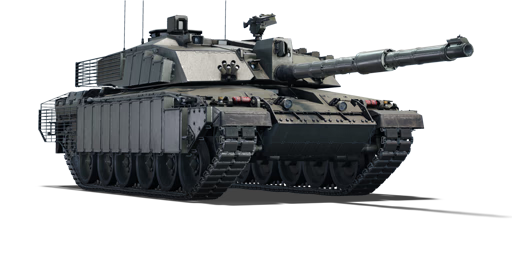The FV4034 Challenger 2 (Dorchester Level 2F) is a modification of the Challenger 2 designed to provide enhanced protection in urban combat. First deployed in Iraq in 2004 to counter rocket-propelled grenades (RPGs), the armour package provides an extra level of protection over the previous Dorchester Level 2E, featuring extra Chobham armour (non-explosive reactive armour (NERA) and ceramic composites), as well as ROMOR-A explosive reactive armour (ERA) on the front plates and Dorchester Level 2F blocks on the hull and sides. The ERA tiles are installed on a frame, which is attached to the front hull. For protection against various portable anti-tank weapons, additional external composite armour is placed on both the turret and hull sides, as well as slat armour covering the rear parts of the hull and back of the turret.
Introduced in Update "Starfighters", the Challenger 2 (2F) offers substantially better protection than the standard Challenger 2. Certain small-calibre anti-tank high explosive (HEAT) ammunition, as well as some low-penetration anti-tank guided missiles (ATGMs), can be easily resisted. It is crucial to note, however, that the Dorchester 2F extra armour packages are intended to defend against portable anti-tank weapons rather than modern, heavy anti-tank weapons. Another significant difference is that the mobility of the Challenger 2 (2F) is significantly lower than that of the standard Challenger 2, resulting in even more disadvantages when compared to other nations' main battle tanks. As a result, it is critical to be cautious when crossing open regions on the maps during matches and to keep an eye out for fast-flanking enemies.















